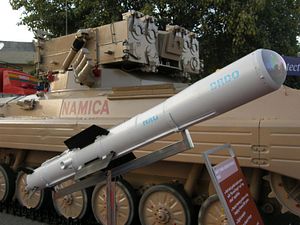The Indian Army is delaying the purchase of the third-generation anti-tank guided missile (ATGM) Nag saying that more trials are needed before a decision over missile’s procurement can be made, according to media reports.
“The developmental trials of Nag ATGM carried out earlier this month have only proven partial success, and many more user trials will be needed,” an Indian Army official told Defense News last month. “The entire exercise of hot- and cold-region trials of the Nag missile will take more than one year to complete, after which the missile could be ready for production.”
India’s Defense Research and Development Organization (DRDO) successfully conducted flight tests of the Nag ATGM in early September. “With these two successful flight trials, and the flight test conducted earlier in June in the peak of summer, the complete functionality of Nag ATGM along with launcher system NAMICA has been established and marked the successful completion of development trials of Nag Missile,” the Indian Ministry of Defense said announced the time.
The induction of the missile has now been delayed by over a decade. One of the major issues remains the Nag’s high price tag and various technical shortcoming including thermal sensors that are still not “up to the requirement,” another Indian Army official related to Defense News. Overall, the Indian Army plans to procure up to 8,000 Nags with an immediate requirement of 2,000 ATGMs. However, the service is expected to place an order for only 500 NAGs initially.
As I explained last month, the missile, manufactured by India’s sole missile producer, state-owned Bharat Dynamics Limited, has so far only been tested while mounted on the NAMICA combat vehicle:
Nag is a fire-and-forget ATGM with an estimated range of 4 kilometers. The Nag Missile Carrier (NAMICA) is an Indian license-produced variant of the Soviet-era BMP-II armored infantry fighting vehicle. NAMICA can launch Nag missiles from a retractable armored launcher that contains four launch tubes (the armored vehicle can carry up to 12 missiles in total) and the guidance package including a thermal imager for target acquisition. The missile’s targeting system is based on visual identification prior to its launch (‘lock-on-before-launch system’).
DRDO has also been working on a more advanced air-launched variant of the Nag, the Helina ATGM with a maximum range of up to seven kilometers. “Once operational, the Helina will be part of the armaments of the indigenously designed Light Combat Helicopter (LCH) and the Hindustan Aeronautics Limited (HAL) Dhruv advanced light helicopters (ALH),” I explained. The Helina is still in early stage of development.
































